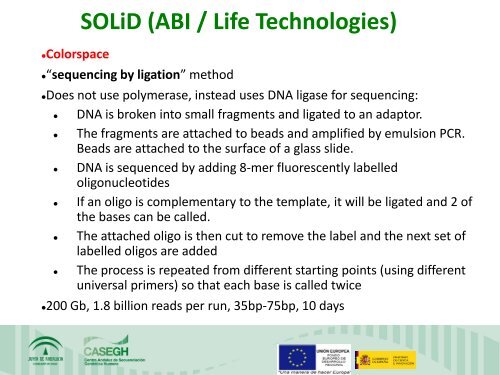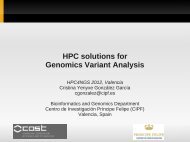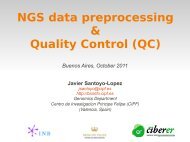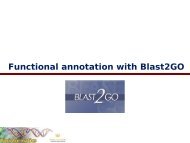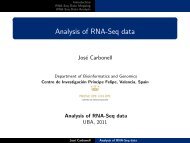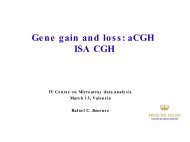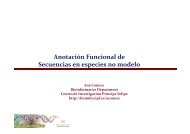Introduction to NGS technologies - Bioinformatics and Genomics ...
Introduction to NGS technologies - Bioinformatics and Genomics ...
Introduction to NGS technologies - Bioinformatics and Genomics ...
You also want an ePaper? Increase the reach of your titles
YUMPU automatically turns print PDFs into web optimized ePapers that Google loves.
•Colorspace<br />
SOLiD (ABI / Life Technologies)<br />
•“sequencing by ligation” method<br />
•Does not use polymerase, instead uses DNA ligase for sequencing:<br />
• DNA is broken in<strong>to</strong> small fragments <strong>and</strong> ligated <strong>to</strong> an adap<strong>to</strong>r.<br />
• The fragments are attached <strong>to</strong> beads <strong>and</strong> amplified by emulsion PCR.<br />
Beads are attached <strong>to</strong> the surface of a glass slide.<br />
• DNA is sequenced by adding 8-mer fluorescently labelled<br />
oligonucleotides<br />
• If an oligo is complementary <strong>to</strong> the template, it will be ligated <strong>and</strong> 2 of<br />
the bases can be called.<br />
• The attached oligo is then cut <strong>to</strong> remove the label <strong>and</strong> the next set of<br />
labelled oligos are added<br />
• The process is repeated from different starting points (using different<br />
universal primers) so that each base is called twice<br />
•200 Gb, 1.8 billion reads per run, 35bp-75bp, 10 days


